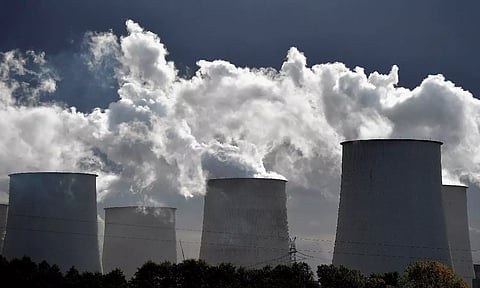

NEW DELHI: In February, an image of a young polar bear fast asleep on an iceberg bagged the Wildlife Photographer of the Year People’s Choice Award. The image, shot by a British photographer, was a reminder of the critical relationship between an animal and its habitat, and was representative of the impacts of global warming and loss of biospheres. A report released by the World Meteorological Organization (WMO) this week said that greenhouse gas levels, surface temperatures, ocean heat and acidification, and sea level rise, all reached record highs in 2023.
The State of the Global Climate 2023 confirmed that 2023 was the warmest year in the 174-year record, with the global average near-surface temperature at 1.45 degrees Celsius above the pre-industrial baseline (1850-1900). Several factors have emerged as a cause for concern, and these include the unprecedented ocean warmth, glacier retreat, and ice loss in the Antarctic Sea. The concentrations of the three main greenhouse gases – carbon dioxide, methane, and nitrous oxide – also reached record-high observed levels. The rate of sea level rise in the last 10 years (2014–2023) has more than doubled since the first decade of the satellite record (1993 – 2002).
The implications are pronounced in countries like India. Just this week, researchers at the US-based Climate Central, an independent group of scientists, conducted the analysis to place India within the context of global warming trends, focusing on the winter months (December to February). The study of temperature data since 1970 shows that winters are quickly transitioning into summer-like conditions in north India, shortening the spring season.
These regions are now experiencing abrupt transitions from cool winter-like temperatures into much warmer conditions, traditionally observed in March. What might pique the curiosity of Chennaiites is the finding that south India has also been experiencing strong warming in December and January. The IMD has also confirmed that India is likely to experience a warmer summer this year with El Nino conditions predicted to continue at least until May.
Extreme weather has significant socio-economic consequences for people in India and across the world. Major floods, tropical cyclones, extreme heat and drought, and associated wildfires had become the order of the day in 2023, a year that smashed the metrics on every existing climate indicator. As of this moment, the number of people who are acutely food insecure worldwide has more than doubled, from 149 million people before the pandemic to 333 million people in 2023. This is as per data culled from 78 monitored countries by the World Food Programme.
Economic downturns and high food prices, exacerbated by surging costs of agri inputs, driven by global conflicts are driving food insecurity. To limit warming to 1.5 degrees Celsius, countries must start delivering on their Nationally Determined Contributions (NDCs). It is imperative to reduce emissions across economies, and direct feasible investments towards adaptation to climate change. India has demanded a whopping trillion dollars over the next decade from developed countries to adapt to, and mitigate, the challenges arising from climate change. And many other countries are in line. Unless the First World owns up to its misdoings, we might end up singing a requiem for this blue planet.